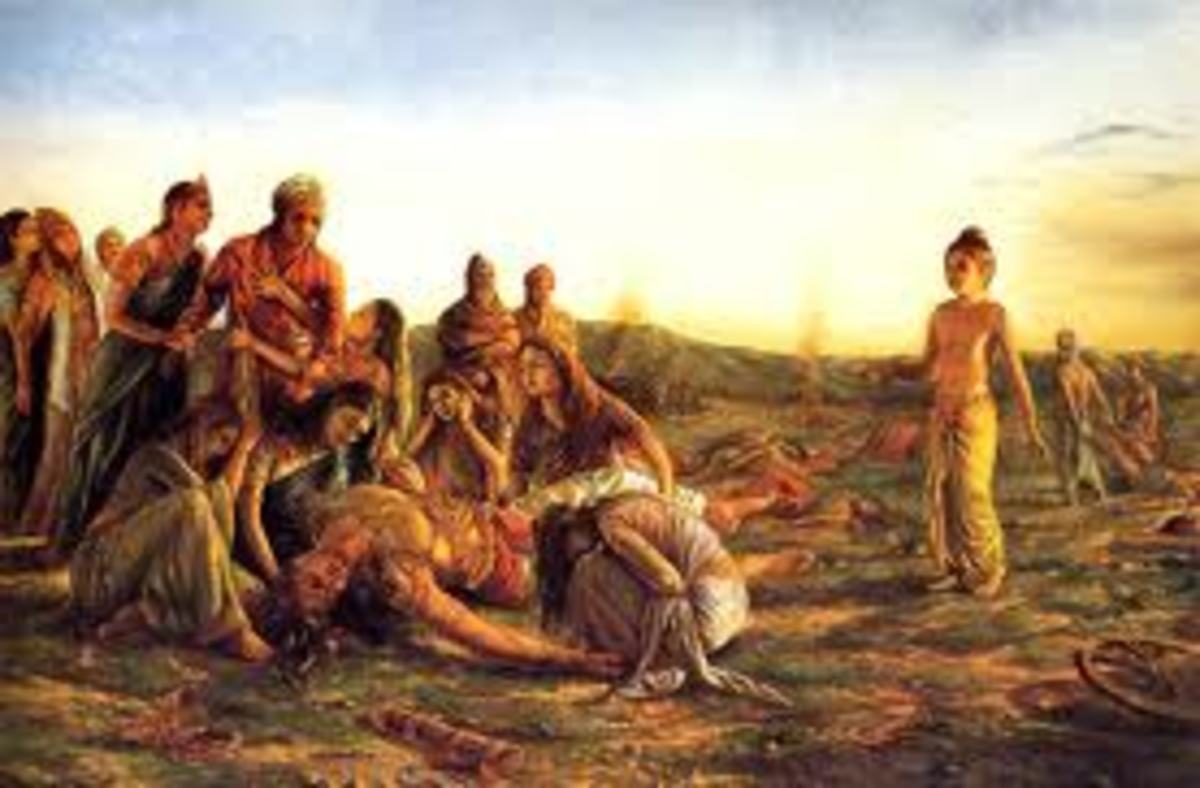
It has been thought by the scholars that period of Ramayana precedes the period of Mahabharata. The main reason that has prompted scholars to believe Ramayana being older is that the story of Rama appears in the Mahabharata. Also the argument is that social structure that appears in Ramayana is much simpler and primal than the complex structure of Mahabharata, hence it is said and believed that Ramayana is oldest epical work than Mahabharata.
We have to check this argument from different points of views. It is a well known fact that there have been many additions, interpolations and alterations in the whole body of Mahabharata. Originally this epic was merely of 12000 stanzas, titled as “Jay” in which many additions were done in the course of the time to make it “Mahabharata”, as large as hundred thousand stanzas epic. While Rama story appears in present Mahabharata, Buddha too appears which makes it almost impossible for us to determine exact time of the Mahabharata.
The same is with Ramayana. Originally Ramayana was titled as “Paulatrsyavadha”. First and seventh parts of the present Ramayana have been proved to be later additions. It is agreed that the both epics took final shape during third or fourth century AD. The original language of both the epics only could be Prakrit as Sanskrit was developed in later times.
However, without debating on whether both the epics are based on real life stories or are imaginary poetic creation, we shall try to find out which epic was oldest based on the raw material both the epics provide.
- We can see from the various stories of the Mahabharata that polyandry and polygamy was in the practice in the same era. Also a system of “Niyoga” (Having child from other man if husband was impotent, or is died childless.) was in practice. Kunti and Madri conceived children from other men as their husband Pandu was cursed. Dropadi married five brothers. We have ample of evidences of such practices in Mahabharata.
- We are aware that polyandry was a normal practice during ancient period when matriarchal society did exist. Polygamy occurred during the period when patriarchal system gradually replaced the old system. As we find in Mahabharata examples of both the practices, it appears that Mahabharata story shaped up during the transitional period of the social order.
- In matriarchal society women had more powers with enormous freedom in the society. We can find that the women in Mahabharata enjoying the freedom, even having children before marriages and no social stigma upon them for their immoral conduct. When present Mahabharata took final shape, social order was changed to patriarchal society, male dominated society it was necessary for the writers to provide sanctity to the acts of polyandry and Niyoga, which had became a sin by then. Hence to cover up the realities of those times authors of later times mixed mythical stories around such acts, that it was all divine and God’s wish, not to be copied by common men.
- The similar stories can be traced back to the ancestors of the Kuru clan.
- At the other hand, when we look at Ramayana, we find that the patriarchal society is strongly established. Polygamy is not considered to be a sin but monogamy is praised over polygamy through the Rama story.
- In Ramayana, women seem to have lost their freedom. Even sexual thought of any man other than husband seems to be considered as a sin. Rama can abandon his wife with a mere doubt that she might have cohabited with his prime enemy Ravana.
So, what we see from the above is Mahabharata and Ramayana are representing entirely different societies. The course of the human social history flows from matriarchal to patriarchal society. Mahabharata appears to be happened during the transitional period when old system was gradually dying while new system was emerging. In Ramayana we find that, at the least in the north, patriarchal society was fully established by then.
From this it seems to me that Mahabharata time (not the writing time, but when the original story was shaped.) is older than of Ramayana. There could be distance of few centuries between both the stories, so to have social order entirely changed.
No comments:
Post a Comment